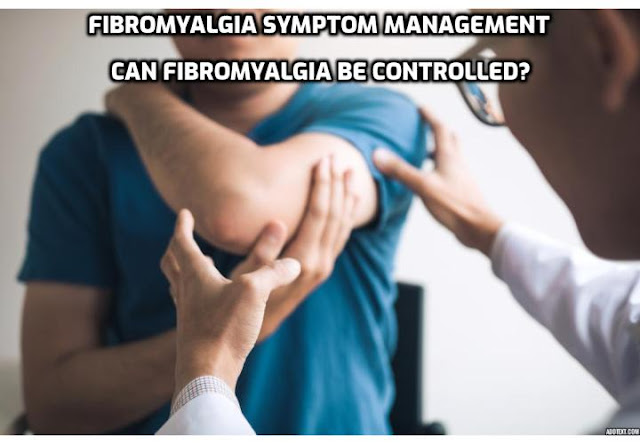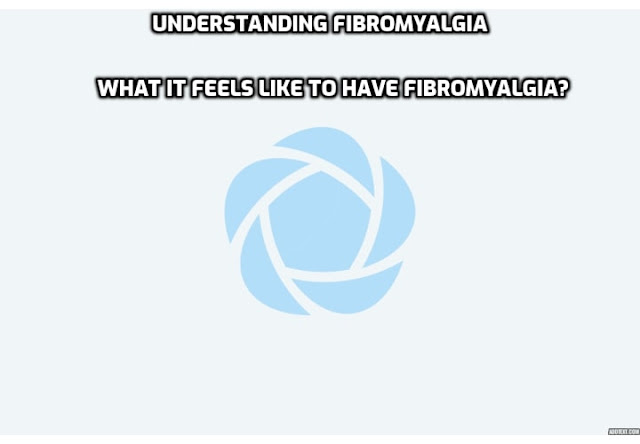Understanding
Fibromyalgia Syndrome - Fibromyalgia Syndrome, Treatment and Symptoms
Introduction
Fibromyalgia is a complex chronic condition which
predominantly affects women. The latest statistics show us that 9 out of
every 10 sufferers are women. Fibromyalgia used to be known as fibrositis, however, as more is learnt about this
condition, it was re-named to Fibromyalgia.
While
this condition does not affect the sufferer’s life span, full recovery from Fibromyalgia is very uncommon and where this
happens, the likelihood of a recurrence is very high.
What
are the Symptoms of Fibromyalgia?
The
main symptom of Fibromyalgia is that of pain, tender areas of the
body and tiredness. However, the symptoms which each patient suffers from
vary in both number and degree. The severity of the symptoms can vary due
to the level of stress or sometimes the weather. None of the most common
symptoms are visible outwardly. All this can make diagnosis of Fibromyalgia very difficult.
There
is a big list of the most common symptoms which includes
-
Fatigue, severe tiredness and a significant lack of
stamina
-
Headaches and facial pain, often as a result of
neck, shoulder and jaw muscle stiffness
-
General pain and stiffness especially in the trunk and abdomen.
-
Specific soreness and tenderness
-
An itching or burning pain accompanied occasionally with a muscle spasm
-
Irritable bowels or bladed, also a need or urgency
to pass urine.
-
Poor concentration
-
Restlessness in legs.
What
is the cause of Fibromyalgia?
We
don’t know what the cause of Fibromyalgia is yet. There appear to be a
number of factors which are common in a significant number of the sufferers of Fibromyalgia though.
They
include
-
change in sleep pattern
-
serotonin deficiency (the mood and sleep regulating hormone)
- some
kind of viral infection
- a
psychological disturbance
- a
lack of exercise
How
to treat Fibromyalgia?
Due to
the fact that we don’t know what causes Fibromyalgia, the treatment generally
consists of relieving the symptoms of Fibromyalgia. As with most conditions, there are two sides
to treatment which are not necessarily exclusive but should be done in
tandem. They are via a variety of
medical methods, plus there are a number of things which you can do to help
relieve the symptoms.
The
self-help methods include
-
Increase your level of exercise. It has been shown that those patients with
high levels of aerobic fitness generally suffer less from Fibromyalgia
-
Regular stretching or yoga
- Avoid
using nasal decongestants and also reduce your consumption of coffee and
alcohol
-
Sometimes more easily said than done, but by controlling your emotions and behaviour,
hopefully this will reduce your stress levels.
On top
of these self-help methods, your doctor will probably be able to reduce your
symptoms by
-
prescribing low dose tricyclic anti-depressants to deal with the serotonin
deficiency. This will help to promote
better sleep and hopefully reduce the pain
- Local
anaesthetic mixed with corticosteroids for local pain relief
- Pain
killers e.g. paracetamol or ibuprofen
- In
some cases, stronger narcotic painkillers may be used.
Understanding
Fibromyalgia Syndrome - Fibromyalgia Syndrome Explained
Fibromyalgia
syndrome is a disorder of the musculoskeletal system. The cause is unknown, but
the name actually means pain in muscles, tendons, ligaments, and soft fibrous
in the human body.
Those
with fibromyalgia often say that they literally hurt all over their body. They
feel like all of their muscles have been strained, their bones ache, and
tendons feel stretched and achy. The disorder can be found in people of most
any age but is more common in women than it is in men. Overall, someone with
fibromyalgia will feel like they have a bad flue with the achy muscles and
body. The only problem is that this doesn’t go away in 24 hours.
Symptoms
of fibromyalgia Syndrome Explained
Basically,
there are three main symptoms to fibromyalgia (and a host of other symptoms
from digestive to reproductive issues): pain, fatigue and sleep issues. Each
individually is terrible, but combined they make fibromyalgia a crippling
disorder.
The
main symptom of fibromyalgia is the pain. It is a pain that really has no
limits. Sufferers describe deep aching in the muscles, throbbing and stabbing
pains in them as well. There is sometimes burning in the muscles as well. In
most cases the pain is worse in the morning and often more intense with muscles
that get more use.
Fatigue is another big symptom of fibromyalgia.
It is usually a mental fatigue that leaves sufferers feeling lethargic and void of any energy or motivation.
Concentration becomes difficult and the body may actually feel heavier and
sluggish. Sufferers of fibromyalgia sometimes say they just feel like they are
in a constant fog.
When
sufferers of fibromyalgia syndrome explained symptoms, they rarely mentioned
specific sleep problems. However, it has been found that most who have
fibromyalgia do suffer a problem called the alpha-EEG anomaly. Basically, it
means that while the person has no trouble going to sleep, their brain
continually works from sleep to active mode through the night. Sleep is then
disrupted and the person with fibromyalgia ends up more fatigued than before. It is a vicious cycle.
Treatment
Having
fibromyalgia syndrome explained must include the treatments of the ailment.
Though the cause is unknown, treatments are continually being developed to help
overcome the problem, which can be crippling.
For
the most part, treatments of fibromyalgia are set to help improve sleep quality and reduce pain. A sleep study may be performed since
a sleep disorder is often the first thing treated. Getting better deep sleep does as much as anything
to help quell the symptoms of fibromyalgia.
Next,
the pain is generally treated. This is done with drugs that both fight pain and
increase serotonin in the body. This added serotonin can also help with sleep
sometimes as well.
Hopefully
having fibromyalgia syndrome explained makes it a little easier to relate to
those who have the problem. This disorder, with no known cause, can lead to
other problems like depression and other psychological problems.
Though
the treatments are limited at this time, new drugs and new ideas are
continually hitting the market so that those who do suffer from fibromyalgia
have a better chance of leading a more normal life.
Watch
this video - Understanding Fibromyalgia Syndrome
- What is fibromyalgia and how is it treated?
This
article is from the Get Your Health Back – Fibromyalgia
& Chronic Fatigue Freedom.
It consists of a strategy filled with guides on sleep, pain, depression,
anxiety, diet, exercise and fitness plans, diet plans and packed with 369
healthy and delicious recipes
To
find out more about this program, visit the website - Get
Your Health Back – Fibromyalgia & Chronic Fatigue Freedom



